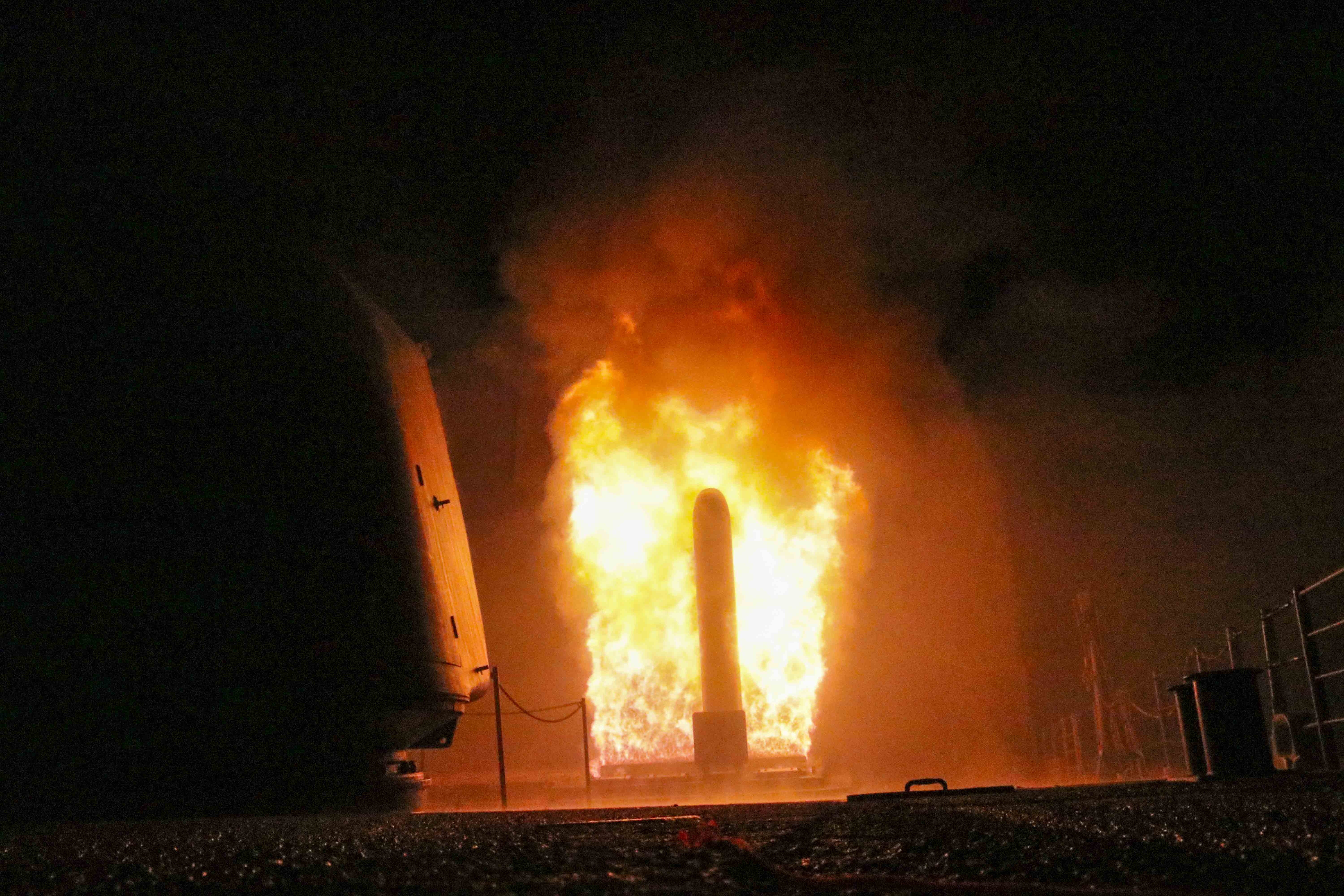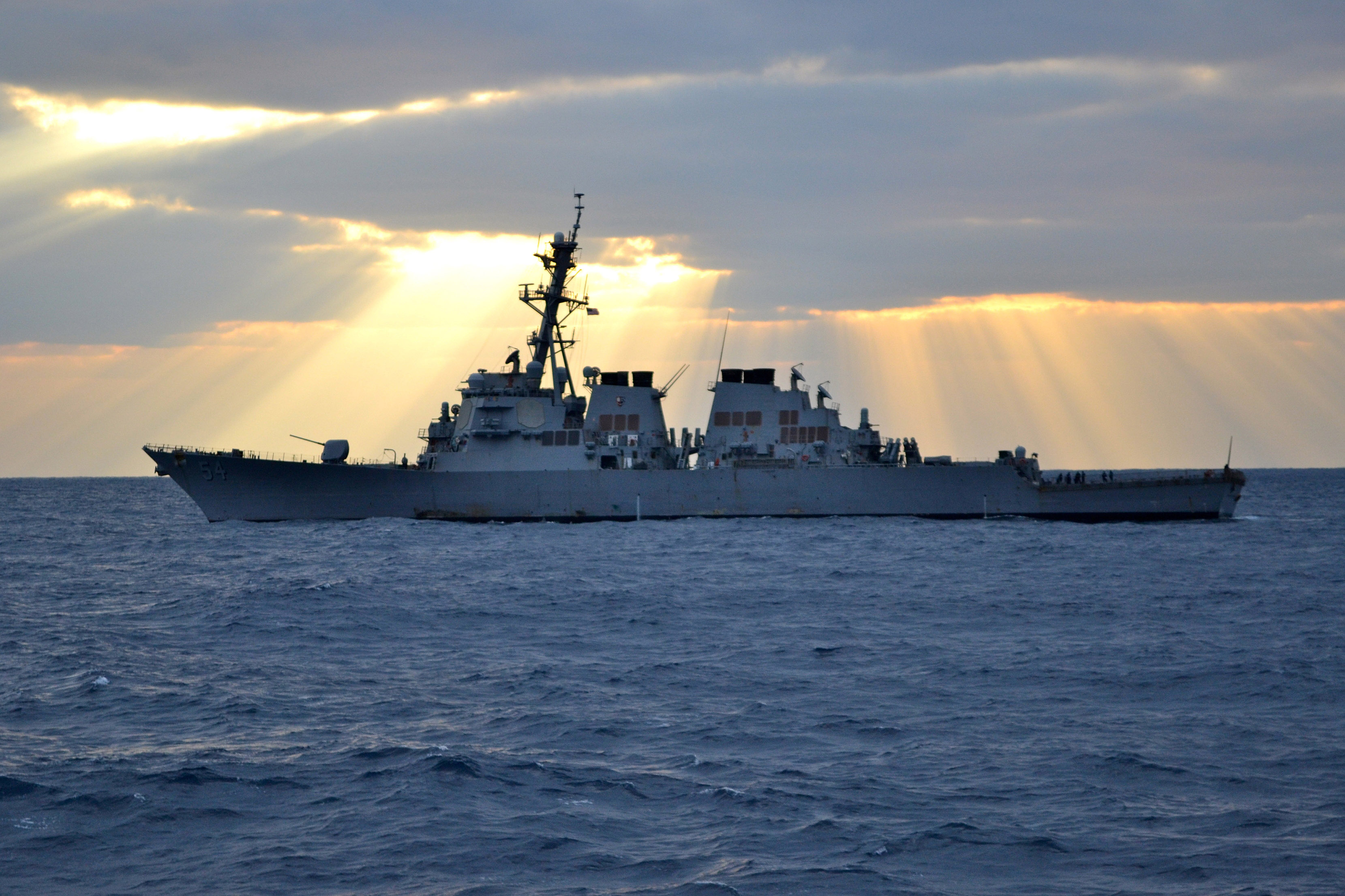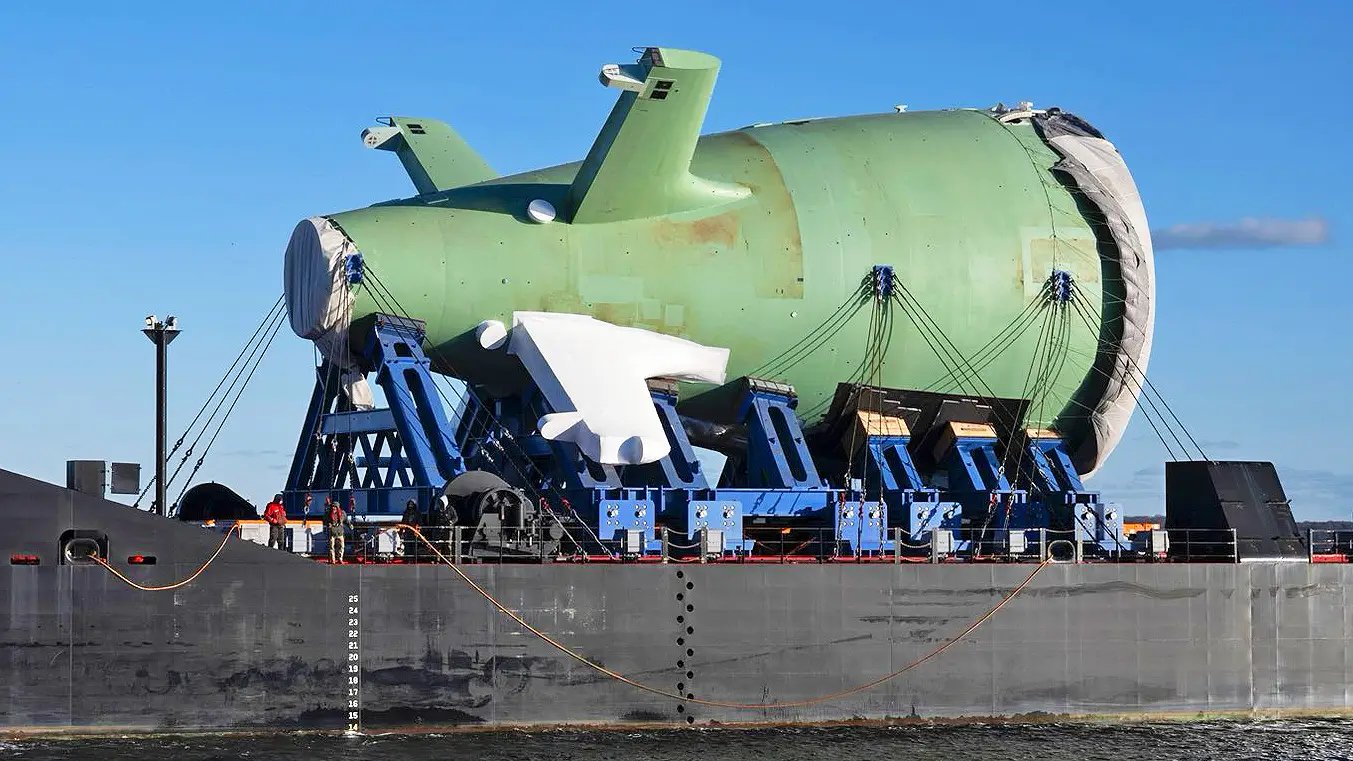
WASHINGTON, D.C. — The Navy is studying its recent strikes on Syria to understand how the fleet performed well in a real-world event and how it may need to perform differently in a future higher-end engagement, the chief of naval operations said on Wednesday.
When the Navy participated in the April 13 air strikes on three Syrian targets, it used multiple classes of surface ships and submarines, operating from both U.S. 6th Fleet and U.S. 5th Fleet areas of operations, and in conjunction with joint and international forces. Adm. John Richardson, who spoke at the U.S. Naval Institute’s annual meeting, told USNI News during a question and answer session that “there are a lot of elements of that operation that are going to be those things that we want to continue to stress.”
“Certainly the working partners and allies, the fundamental pillar of the National Defense Strategy. I’ll tell you what: that came together, to do this sophisticated kinetic strike, pretty quickly. So it is sort of a validation of the investment that we’ve been making over decades really with our partners and allies, which include not only exercises and that sort of thing, but also we go to each other’s schools, we form these strategic partnerships so that when fleet commanders call each other up they know each other by first name, they know each other’s families, et cetera et cetera,” the CNO said.
Richardson also praised the interoperability of the U.S., British and French systems involved in the strike, their ability to precisely hit the same targets at the same time, and their ability to deconflict with one another despite launching their strikes from so many locations.
But for all that went right, Richardson noted that a potential high-end fight would be even more challenging for the fleet. The air strike “was by design a surgical operation,” he said, but a future operation may involve additional strikes, sending aircraft or personnel into enemy territory following the initial strike, or other follow-on actions.
“Let’s leverage that success, let’s springboard off that success: rewind the tape from the very first inkling of that operation, cast that in light of great-power, prolonged competition; what would we do different? What would we need? What capabilities would we need to have in place to not only build up and conduct that strike, but then to get back into the fight and conduct the next one, and the next one after that? And do this now under a much more opposed type of scenario. So this is the type of thinking – I love leveraging off of success, and then how would you take that success and make it even more successful in a higher-end, more sustained, prolonged type of scenario.”
In the case of the Syria strikes, Russia did not engage the incoming missiles but Syrian air defense systems were in place and were triggered after the barrage of missiles, the Pentagon stated after the strikes. Though the Syrian airspace is more complex than what U.S. forces have seen in Iraq and Afghanistan, the situation is still not as complex as the U.S. would face against potential near-peer or peer adversaries.
Also at the U.S. Naval Institute annual meeting, Richardson noted progress being made on implementing recommendations from last year’s Comprehensive Review and Strategic Readiness Review, both of which followed fatal surface navy collisions that killed 17 sailors. Richardson said about 80-percent of the recommendations would be implemented by the end of Fiscal Year 2018 and that the rest were under discussion.
One of the issues that came up during the CR and SRR efforts was the fact that many ships in the Forward Deployed Naval Forces had been homeported abroad for longer than the Navy’s eight-year preferred length. In fact, USNI News understands that one destroyer, USS Curtis Wilbur (DDG-54), has been homeported in Japan since 1995. The House Armed Services Committee is looking at language in its Fiscal Year 2019 National Defense Authorization Act that would ban ships from being homeported abroad for longer than 10 years, and would require that any ships currently over the 10-year mark be brought home within the next three years.

At the press briefing earlier in the day, Richardson told USNI News that the Navy had already drafted a plan to bring back its longest-serving FDNF ships even ahead of the CR and SRR, let alone before HASC looked at that legislation. The Navy wants to ensure no ship is forward-deployed for more than eight years, due to challenges doing deep maintenance in Japan.
“It’ll take us some time to transition into that, so that we get on this eight-year cycle, but we’ll do that as briskly as possible,” he said.
CNO’s office later told USNI News that a plan has been written up that looks at how to rotate each individual hull back to the United States and how to replace it in the FDNF. While a few kinks are still being worked out with a few hulls, the plan is nearly complete – so if the HASC language becomes law the Navy could act quickly to comply with the three-year window to bring home all long-serving FDNF ships.





